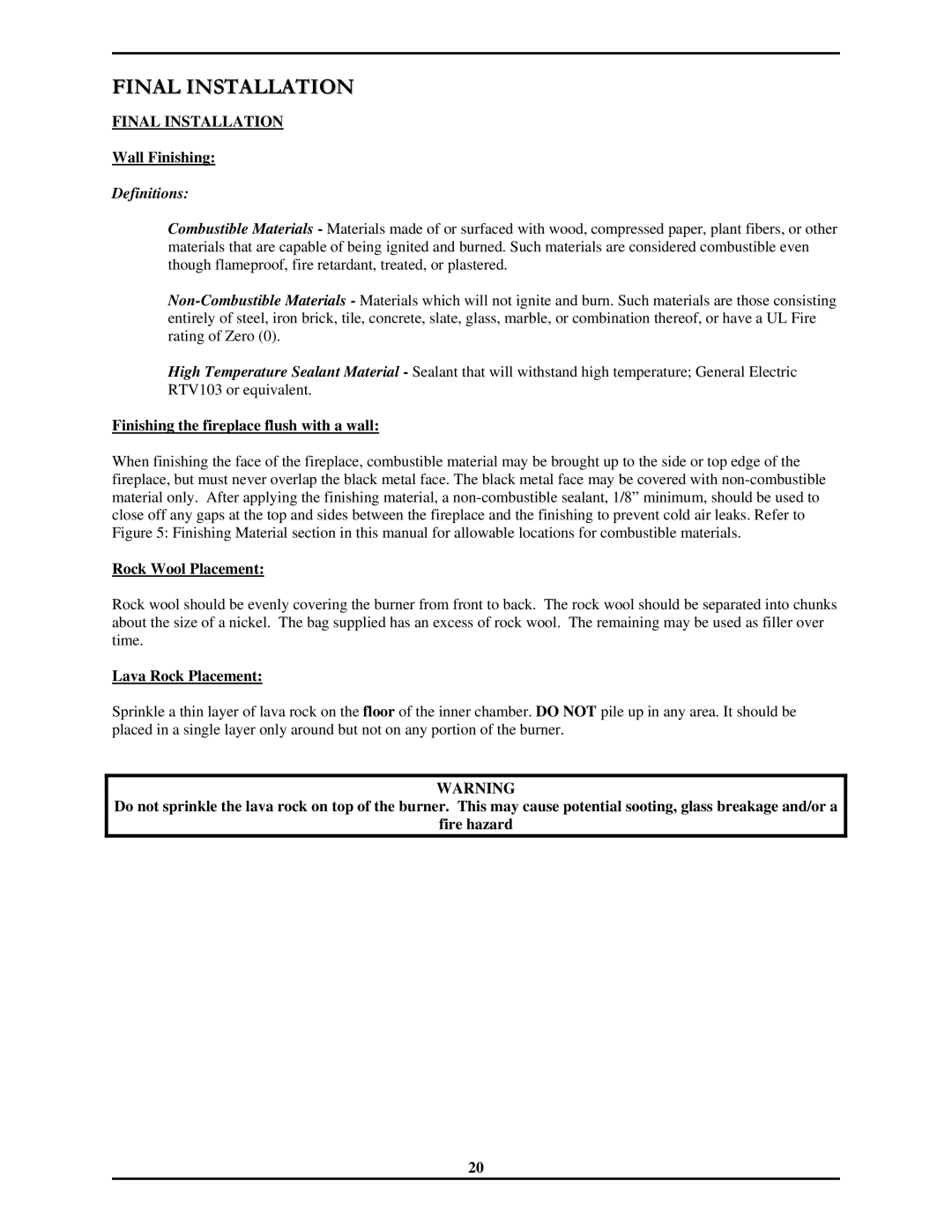
FINAL INSTALLATION
FINAL INSTALLATION
Wall Finishing:
Definitions:
Combustible Materials - Materials made of or surfaced with wood, compressed paper, plant fibers, or other materials that are capable of being ignited and burned. Such materials are considered combustible even though flameproof, fire retardant, treated, or plastered.
High Temperature Sealant Material - Sealant that will withstand high temperature; General Electric RTV103 or equivalent.
Finishing the fireplace flush with a wall:
When finishing the face of the fireplace, combustible material may be brought up to the side or top edge of the fireplace, but must never overlap the black metal face. The black metal face may be covered with
Rock Wool Placement:
Rock wool should be evenly covering the burner from front to back. The rock wool should be separated into chunks about the size of a nickel. The bag supplied has an excess of rock wool. The remaining may be used as filler over time.
Lava Rock Placement:
Sprinkle a thin layer of lava rock on the floor of the inner chamber. DO NOT pile up in any area. It should be placed in a single layer only around but not on any portion of the burner.
WARNING
Do not sprinkle the lava rock on top of the burner. This may cause potential sooting, glass breakage and/or a
fire hazard
20
